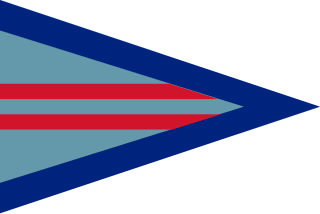
Wing commander is a senior commissioned rank in the British Royal Air Force and air forces of many countries which have historical British influence, including many Commonwealth countries but not including Canada and South Africa. It is sometimes used as the English translation of an equivalent rank in countries which have a non-English air force-specific rank structure. It ranks immediately above squadron leader and immediately below group captain.
Operation Dingo was a major raid conducted by the Rhodesian Security Forces against the Zimbabwe African National Liberation Army (ZANLA) headquarters at Chimoio and a smaller camp at Tembue in Mozambique from 23 to 25 November 1977.
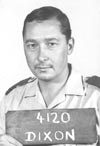
Squadron Leader Christopher John Taylor Dixon D.C.D., also known by his callsign of Green Leader, was a Rhodesian military pilot for the Rhodesian Air Force and was born in Shabani, Southern Rhodesia. He was best known for leading the Rhodesian Operation Gatling bombing raid over Zambia, which later became known as the "Green Leader Raid".

The Rhodesian Air Force (RhAF) was an air force based in Salisbury which represented several entities under various names between 1935 and 1980: originally serving the British self-governing colony of Southern Rhodesia, it was the air arm of the Federation of Rhodesia and Nyasaland between 1953 and 31 December 1963; of Southern Rhodesia once again from 1 January 1964; and of the unrecognised nation of Rhodesia following its Unilateral Declaration of Independence from Britain on 11 November 1965.

The Somali Air Force is the air force of Somalia. Called the Somali Aeronautical Corps (SAC) during its pre-independence period (1954–1960), the Somali Air Force was renamed as such after Somalia gained independence in 1960. Ali Matan Hashi, Somalia's first pilot and person principally responsible for organizing the SAF, was its founder and served as its first Chief. At one point, the Somali Air Force had the strongest airstrike capability in the Horn of Africa. But by the time President Siad Barre fled Mogadishu in 1991, it had completely collapsed. The SAF headquarters was technically reopened in 2015.
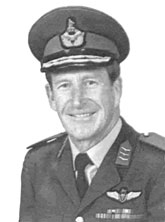
Air Marshal Norman Walsh was a senior officer in the Rhodesian Air Force and the first commander of the Air Force of Zimbabwe.

Air Chief Marshal Harsha Abeywickrema, RWP, RSP, VSV, USP, rcds, psc, qfi is a senior Sri Lankan air force officer and fighter pilot, who served as the Commander of the Sri Lankan Air Force from 2012 to 2014 and later went on to serve as the Chairman of the Bank of Ceylon.
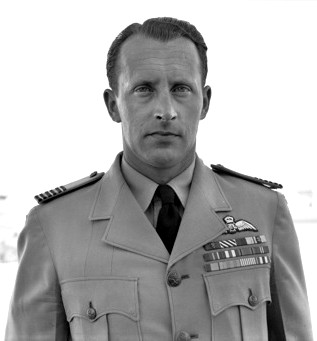
Air Vice-Marshal Brian Alexander Eaton, was a senior commander in the Royal Australian Air Force (RAAF). Born in Tasmania and raised in Victoria, he joined the RAAF in 1936 and was promoted to flight lieutenant on the outbreak of World War II. He held training positions before being posted to No. 3 Squadron at the beginning of 1943, flying P-40 Kittyhawk fighter-bombers in North Africa. Despite being shot down three times within ten days soon after arriving, Eaton quickly rose to become the unit's commanding officer, and by year's end had been awarded the Distinguished Flying Cross. His leadership earned him the Distinguished Service Order and Bar in 1944–45, and command of No. 239 Wing RAF in Italy, with the temporary rank of group captain. He was also awarded the US Silver Star in 1946 in recognition of his war service.
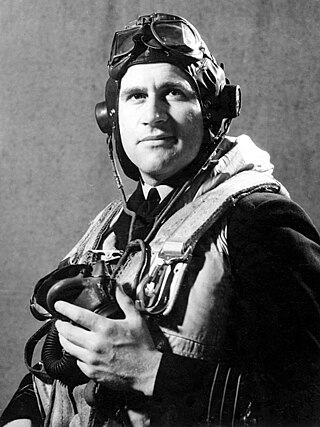
William Lloyd Brill, & Bar was a senior officer and bomber pilot in the Royal Australian Air Force (RAAF). Born in the Riverina district of New South Wales, he was a farmer and a member of the Militia before joining the RAAF in 1940. After training in Australia and Canada, he was posted to Britain in 1941 to take part in the air war over Europe. Brill first saw combat with No. 460 Squadron RAAF, flying Vickers Wellington medium bombers. He was awarded the Distinguished Flying Cross (DFC) in May 1942 for attacking a target after his plane was badly damaged by anti-aircraft fire. Following assignment as an instructor with the Royal Air Force (RAF), he returned to the bombing campaign in January 1944 as a flight commander with No. 463 Squadron RAAF, flying Avro Lancaster heavy bombers.
Air Chief Marshal Sir Peter Carteret Fletcher, was a senior Royal Air Force officer who served as Vice-Chief of the Air Staff from 1967 to 1970.
Operation Uric was a cross-border raid carried out in Mozambique by operatives of the Rhodesian Security Forces during the Rhodesian Bush War, with combat assistance from the South African Air Force. During the operation, which took place from 1 to 7 September 1979, up to 200 Rhodesian and South African military personnel attacked bridges and a major staging point for Zimbabwe African National Liberation Army (ZANLA) insurgents in Gaza Province. Along with Operation Miracle, this was one of the largest Rhodesian external operations of the war.
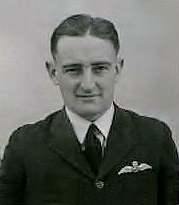
Air Vice Marshal Frank Headlam, was a senior commander in the Royal Australian Air Force (RAAF). Born and educated in Tasmania, he joined the RAAF as an air cadet in January 1934. He specialised in flying instruction and navigation before the outbreak of World War II. In April 1941, he became commanding officer of No. 2 Squadron, which operated Lockheed Hudsons. The squadron was deployed to Dutch Timor in December, and saw action against Japanese forces in the South West Pacific. After returning to Australia in February 1942, Headlam held staff appointments and training commands, finishing the war a group captain.

BidarAir Force Station is a flight training establishment of the Indian Air Force. It was founded during World War II and has been a training center for Indian Air Force pilots since 1963. Trainer aircraft like the HAL HT-2 and variants of HAL HJT-16 Kiran have been used at the airbase for nearly four decades. In 2011, the station was remodeled and refurbished, with the runway extended to 9000 feet and new facilities for aircraft engine maintenance and testing added.
Operation Placid was a Rhodesian military operation in Zambia with clandestine assistance from the South African Air Force (SAAF) during the Rhodesian Bush War. The Rhodesian Air Force planned raids against a ZIPRA camps in Zambia on the northern Rhodesian border.
Operation Motel was a Zimbabwe Rhodesian military operation in Zambia with clandestine assistance from the South African Air Force (SAAF) during the Rhodesian Bush War. The Rhodesian Air Force planned raids against a ZIPRA camp in Northern Zambia.
Operation Gatling, which took place on 19 October 1978, was a joint-force operation into Zambia launched by the Air Force and Army of Rhodesia; the main forces which contributed were Rhodesian Special Air Service and Rhodesian Light Infantry paratroopers. Gatling's primary target, just 16 kilometres north-east of central Lusaka, Zambia's capital, was the formerly white-owned Westlands Farm, which had been transformed into ZIPRA's main headquarters and training base under the name "Freedom Camp". ZIPRA presumed that Rhodesia would never dare to attack a site so close to Lusaka. About 4,000 guerrillas underwent training at Freedom Camp, with senior ZIPRA staff also on site.
Operation Panga was a military operation launched by the Rhodesian Security Forces (RSF) against a camp belonging to the communist insurgent group, ZIPRA. The cadres camp was located on the Mushenshi River in Zambia.
Operation Ignition was an operation undertaken by the Selous Scouts of the Rhodesian Army on 18 September 1976 against the forces of the guerrilla group ZIPRA Francistown.
Operation Chamber was a military raid launched by the Rhodesian Security Forces (RSF) against a camp belonging to the communist insurgent group, ZANLA. The cadres camp was located in Chinvinge, Tete Province, Mozambique. During the course of the operation three troopers were killed, Corporal P O Rice, Trooper C.F Lang and Lance Corporal E Nel were killed.
Operation Mineral was a military operation launched by the Rhodesian Security Forces against communist guerrillas in Mozambique. The operation resulted in an ambush, which took place along a road close to Inchope in Manica Province, by the SAS on 9 June 1979. During the raid 30 guerrillas were killed by the special forces, who were also able to capture guerrilla intelligence documents and weapons as well once the ambush was finished. 2 Rhodesian soldiers, Private Rodrick Masendeke and Lance Corporal Cletos Takundwa were killed during the ambush.












